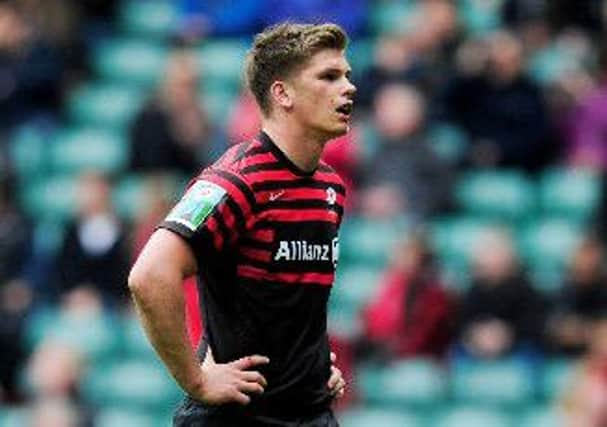Allan Massie: Mystery over forgotten virtue of kicking ball with both feet


Nothing remarkable about that, routine stuff. Nothing remarkable either in the fact that Wilkinson, a natural left-footer, used his right boot on this occasion; we all know that he can kick with either foot and, indeed, his most famous drop goal, to win the World Cup in 2003, was delivered from his right – or wrong – foot.
Yet this is worth dwelling on because so few of today’s highly trained professional players possess this skill. You probably don’t need the fingers of both hands to count the number of contemporary internationals equally comfortable on either foot. Among Scots, Mike Blair is the only one who comes to mind.
Advertisement
Hide AdAdvertisement
Hide AdIt’s very odd, if only because things were different, and better, in the old amateur days. Players such as Jackie Kyle, Ken Scotland and Gordon Waddell were, like Wilkinson, equally adept with either foot. Admittedly, before restrictions on kicking direct into touch were introduced in the mid Sixties, full backs and fly-halves were required to master this skill if they were to be successful. Watching Ken Scotland, for instance, the only clue to which was his natural kicking foot was that he took place kicks right-footed. But my last vivid memory of him was in a match for the North-Midlands against Australia on a miserably cold day in Aberdeen when he fielded a ball 40 yards out near the right touchline, swivelled and unleashed a left-footed drop-kick which soared over the top of the nearer goal-post.
Few people are naturally able to kick with either foot, but it’s a skill that can be learned. It can even be learned quite quickly if you practise enough.
I had an Irish friend at school with ambitions to play for the first XV. There was no obvious candidate for the full-back position in the coming season. So he spent hours of the summer developing the ability to use his left foot. He got the position. What puzzles me is why so few professional players seem willing to devote half an hour a day to learning how to kick well with their wrong foot. They would be so much more useful to their team if they did.
My remarks last week about the comparative unimportance of the Lions seem to have raised a few hackles. It appears that some people do indeed care as passionately about the Lions as they do about Scotland or their own club. All I can do in reply is quote Sam Goldwyn and say, “include me out”. Of course, Lions tours and Test matches produce a lot of good, and often gripping, rugby, and I get a lot of enjoyment from watching it. But the results don’t matter to me half as much as other ones.
Moreover, I deplore the tendency to treat the Six Nations in a Lions year as a series of Lions trials. It’s quite natural that Sky’s rugby programmes should do this. Sky covers the Lions but not the Six Nations. So they have their regular “Lions Watch”, and we all quite happily spend hours discussing the composition of the Lions party. No doubt, too, players do indeed regard selection for the Lions as a high point in their career and find the tour immensely enjoyable. But I still think the Six Nations matters more, and should matter more. That’s all.
As to the composition of the party, we would doubtless all have liked to see a few more Scots get the nod, and four or five of those omitted must have been very close to selection. But, as David Ferguson observed this week, selection of players is, to some extent, determined by the selection of the coaching panel. This isn’t evidence of bias or favouritism. Coaches are happy with the players they know best.
Omissions may be explained in the same way. There were many fans and pundits who thought that Perpignan’s Welsh fly-half James Hook would, and should, have been selected. This always seemed unlikely, because neither Warren Gatland nor Rob Howley has picked him to start for Wales, both preferring Rhys Priestland. When Priestland was injured this season, Howley selected Dan Biggar rather than Hook.
Biggar seems to me unlucky. I would have picked him as the second stand-off ahead of Owen Farrell because he has been the best fly-half in this year’s Six Nations, with Jonny Sexton playing only a game and a half. So coaches determine selection: if there had been a Munster man on the panel, young Peter O’Mahoney would surely be on the plane.
Advertisement
Hide AdAdvertisement
Hide AdThe three Scots chosen all deserve to be there, and it would be no surprise to see Sean Maitland and Richie Gray in the Test XV, with Stuart Hogg on the bench. Maitland is the most complete rugby player of the four wings selected, and I was pretty sure he would go – even though I was unaware that Warren Gatland had picked him for a schools’ team when Maitland was boy in Waikato – another example of a coach being happy to pick a player he knows well.
Anyway, we shall see. Despite my reservations about the importance of the Lions, it should all be great fun and we have a treat to look forward to.